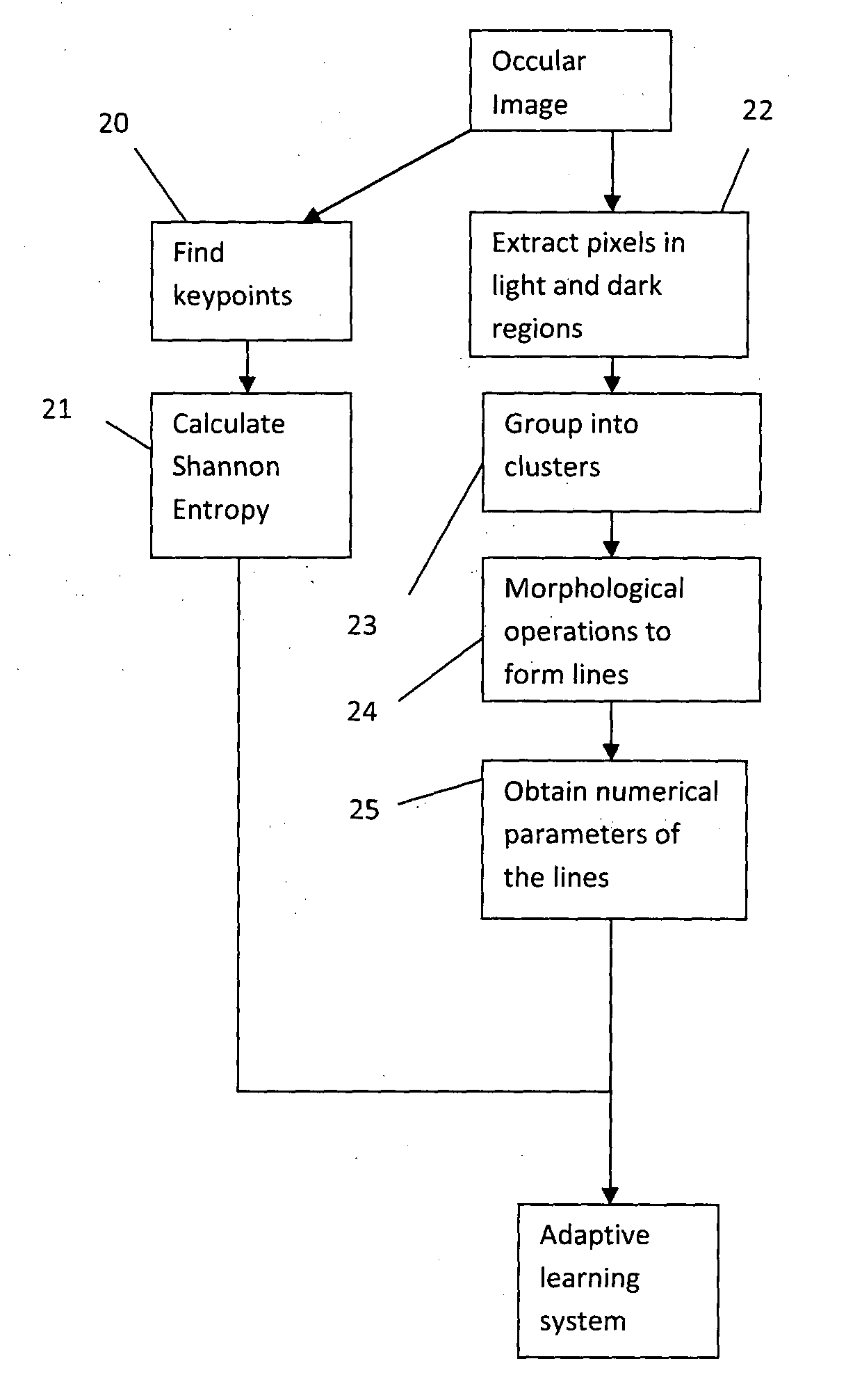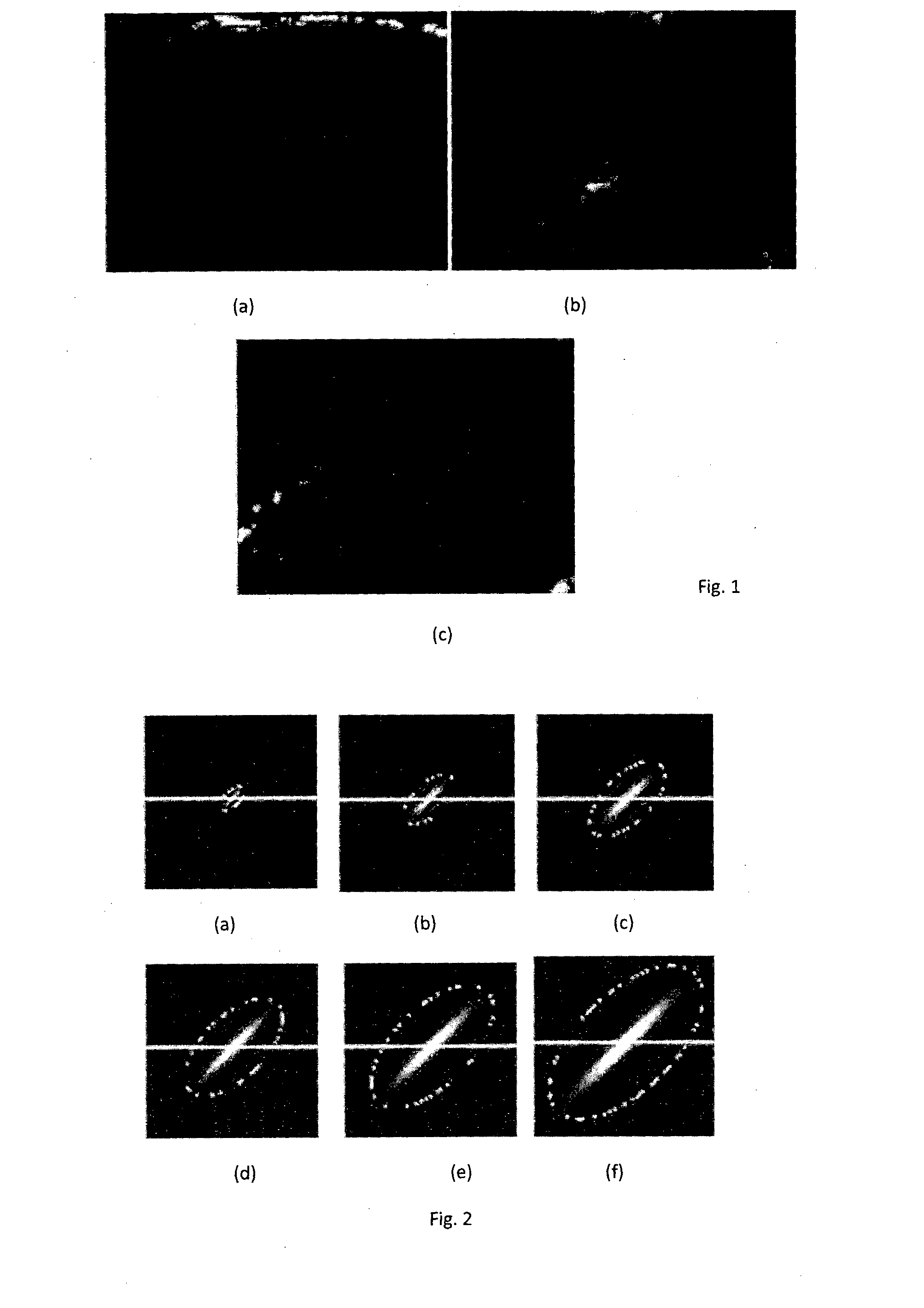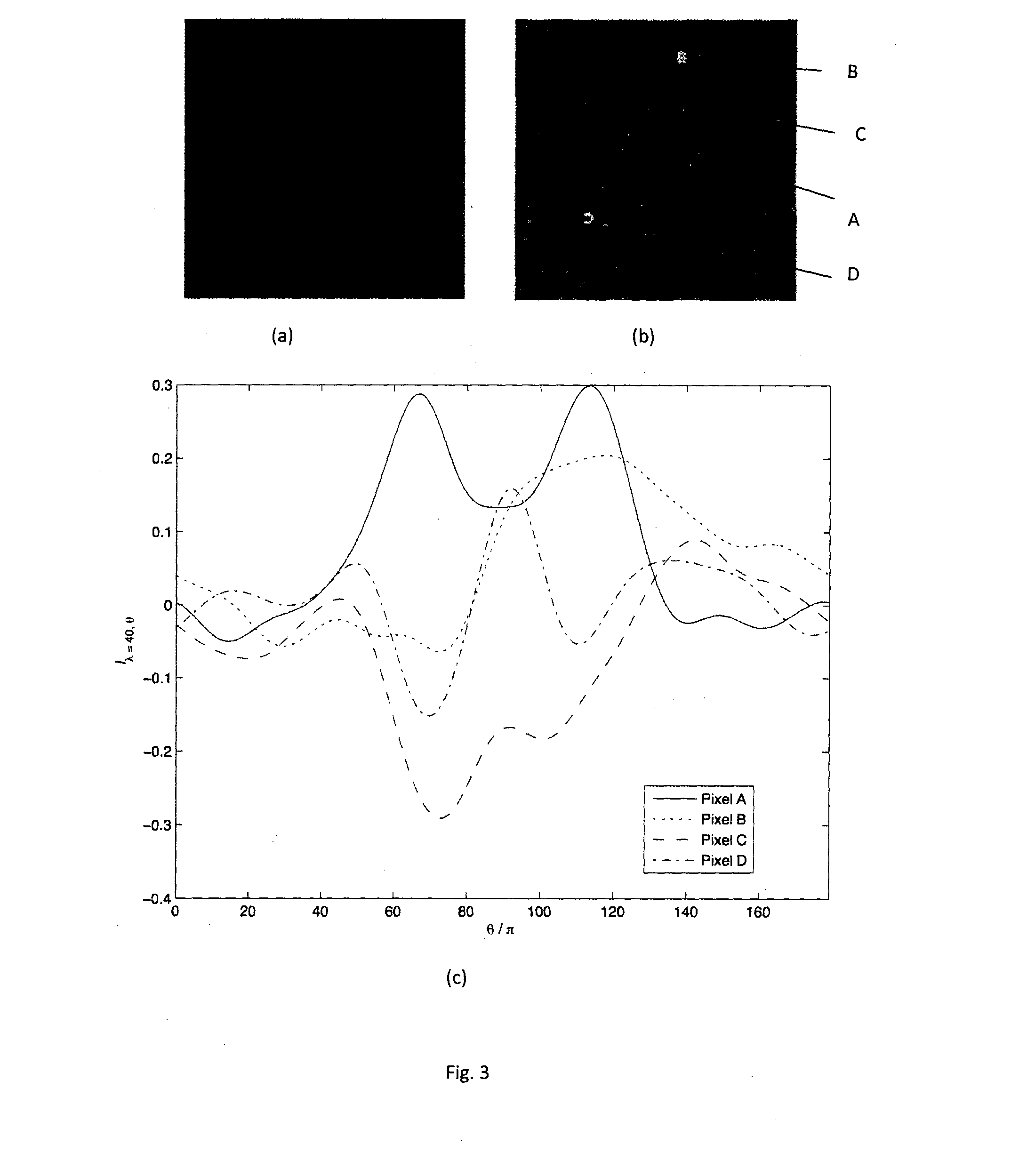Computational methods and apparatus for meibography
a meibography and computational method technology, applied in the field of meibography, can solve the problems of irregular imaged glands, inconvenient local thresholding and conventional methods such as local thresholding
- Summary
- Abstract
- Description
- Claims
- Application Information
AI Technical Summary
Benefits of technology
Problems solved by technology
Method used
Image
Examples
1st embodiment
1.1 GABOR FUNCTIONS
[0036]The first embodiment of the invention is a method of detecting meibomian glands, making use of the family of two-dimensional (2D) Gabor functions. It is known to use a Gabor function as a receptive field function of a cell, to model the spatial summation properties of simple cells [1]. A modified parametrization of Gabor functions is used to take into account restrictions found in the experimental data [2, 3]. Suppose there is a light impulse at a point (x, y) on a 2-dimensional visual field Ω (that is (x, y)∈Ω⊃R2). The Gabor function is denoted by Gλ,θ,ψ(x, y) which is a real valued number (i.e. Gλ,θ,ψ(x, y)∈R). The Gabor function is given by [2]:
Gλ,θ,ψ(x,y)=exp(-x~2+γ2y~22σ2)cos(2πx~λ+ψ)-Gλ,θ,ψDC(1)
where
{hacek over (x)}=(x−x0)cos(θ−π / / 2)÷(y−y0)sin(θ−π / 2),
{tilde over (y)}=−(x−x0)sin(θ−π / 2)+(y−y0)cos(θ−π / 2),
and Gλ,θ,ψDC is DC term due to cosine function. The DC term
Gλ,θ,ψDC=∫∫ΩGλ,θ,ψ(x,y)xy(1)
is subtracted from Gλ,θ,ψ to remove the bias.
[0037]Without loss of...
2nd embodiment
[0054]The second embodiment aims to provide a way of grading a subject, i.e. alloting him into one of at least two categories, such as “healthy”, “unhealthy” or “intermediate”.
[0055]The overall method of the second embodiment is illustrated in FIG. 18. A single occular image is used to obtain one or more numerical parameters (“features”) indicative of whether the image is healthy or not. Note that not all the numerical parameters described below may be collected in realisations of the embodiment, but preferably more than one parameter is collected, and in this case the numerical parameters are combined by an adaptive learning system (such as a support vector machine (SVM) which has been subject to supervised learning), to generate an output indicative of whether the image is healthy or not.
PUM
 Login to View More
Login to View More Abstract
Description
Claims
Application Information
 Login to View More
Login to View More - R&D
- Intellectual Property
- Life Sciences
- Materials
- Tech Scout
- Unparalleled Data Quality
- Higher Quality Content
- 60% Fewer Hallucinations
Browse by: Latest US Patents, China's latest patents, Technical Efficacy Thesaurus, Application Domain, Technology Topic, Popular Technical Reports.
© 2025 PatSnap. All rights reserved.Legal|Privacy policy|Modern Slavery Act Transparency Statement|Sitemap|About US| Contact US: help@patsnap.com



